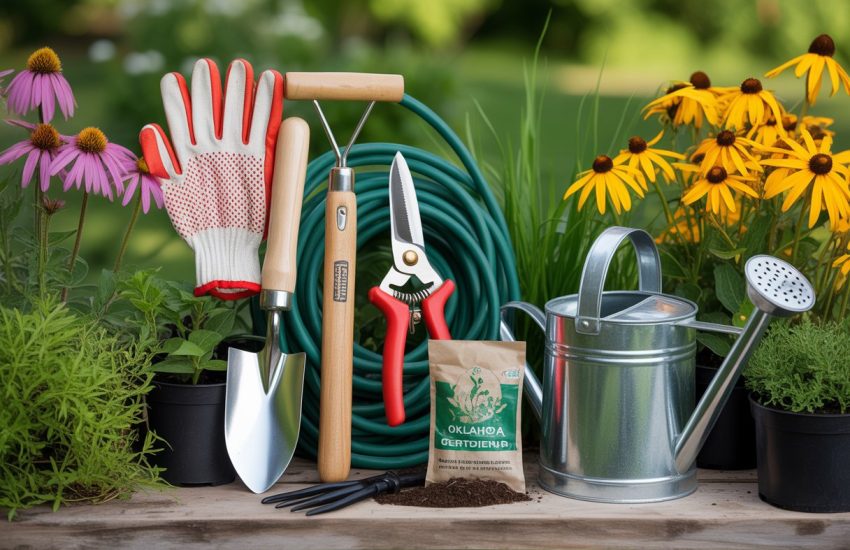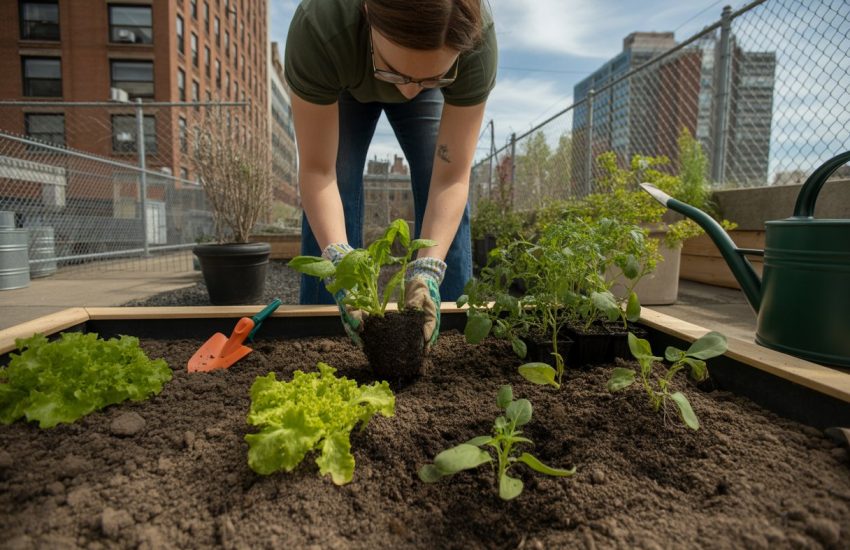How to Grow Corn From Seed
Corn is very nutritious and one of the most famous vegetables worldwide. There are many varieties grown all around the world. The growth process highly depends on corn type. Although refined corn products are also widely consumed and regularly used as ingredients in processed foods, sweet corn is the most popular type of corn. Equally a cereal grain, whole-grain corn is as nutritious due to its high fiber content and plenty of vitamins, minerals, and antioxidants.
The most common color of corn is yellow, but it also occurs in a spectrum of other hues from black to pink, contrary to common knowledge. For example, flint corn (also known as Indian corn) comes with multiple colored kernels ranging from white to red and looks fantastic!
Here are some of the benefits of this great vegetable:
- A form of maize that pops when heated is called popcorn. Corn is a well-liked snack meal that falls under the whole-grain cereal category. Make homemade popcorn without oils or other additions to get the most health advantages.
- Although corn oil, a highly refined cooking oil, is occasionally made from corn germ, a byproduct of maize milling, whole corn has a low-fat content.
- Corn has a large amount of fiber and is primarily composed of carbohydrates. It contains a respectable amount of low-quality protein as well.
- Antioxidants are present in corn in more significant quantities than in many other cereal grains. Especially abundant in carotenoids, which are suitable for the eyes.
- Many vitamins and minerals can be found in abundance in it. Sweet corn often has more vitamins than popcorn, although popcorn typically has more minerals.
How Long for Corn to Grow From Seed
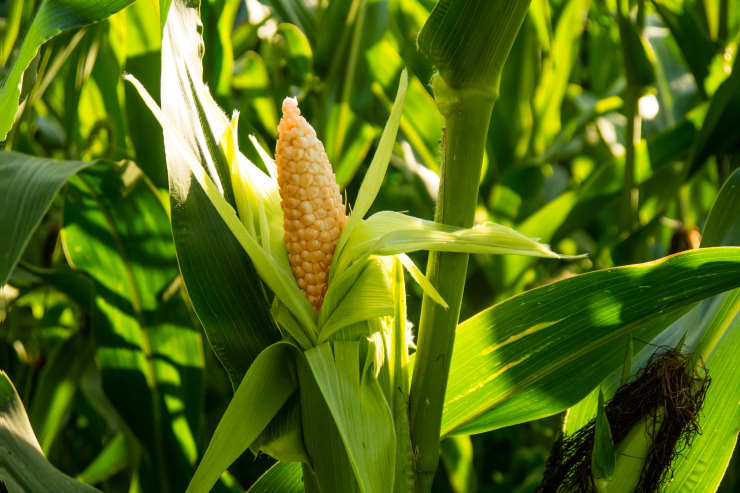
After plantation, you should see green sprouts in about a week. You must spread slow-release nitrogen fertilizer or a specialized high nitrogen fertilizer for it when the plants are around ten inches tall since this vegetable is very needy during the growing process. Instead of hitting or going inside the plants, you want the fertilizer to interact with the soil around or off to the sides of the plants.
You can also now discard any seedlings that appear to be weak and keep just the strongest. The maize doesn’t seem to mind being crowded as long as you continue to feed and water it. Even if you’re using a high-quality fertilizer, you should still feed it every thirty days. This is crucial information on how to grow corn from seed. Also, make sure to water thoroughly and deeply. Ear development is reliant on water. You need to be careful when fertilizing and watering your plant.
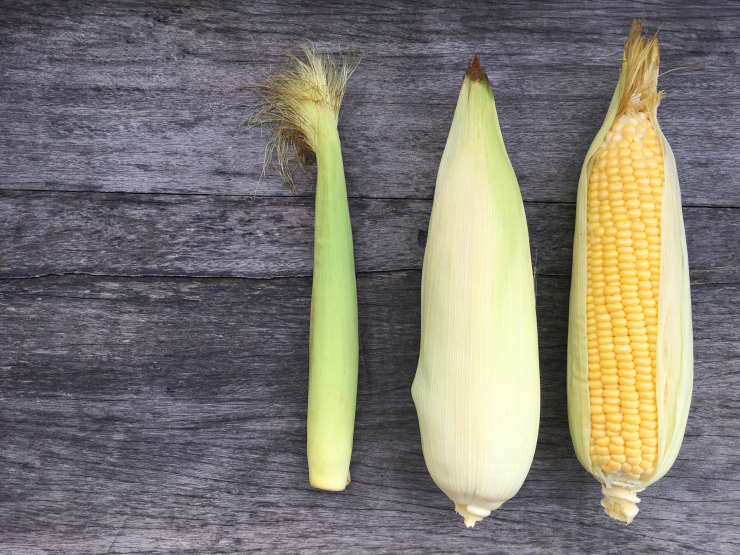
Corn stalks occasionally seem to branch out from the soil surface; at the base of the cornstalk, these suckers sprout. They won’t harm anything, but you are free to get rid of the suckers. If anything, clearing them away might deter animals from building nests right in the heart of your cornfield.
Some corn types require up to 120 days from planting to harvest, while early versions require only 80 to 90 days. Your corn might just be a late-season variety that grows more slowly. We suggest you fertilize the plants to ensure healthy development by July.
Since maize is a heavy feeder, it’s also possible that, in your situation, they require more food and water to flourish. You may test if adding a generous amount of vegetable fertilizer and thoroughly rinsing it in makes a difference. Although your results may vary, we suggest using a high-quality miracle grow because it doesn’t burn the corn.
The Fastest Way to Grow Corn From Seed
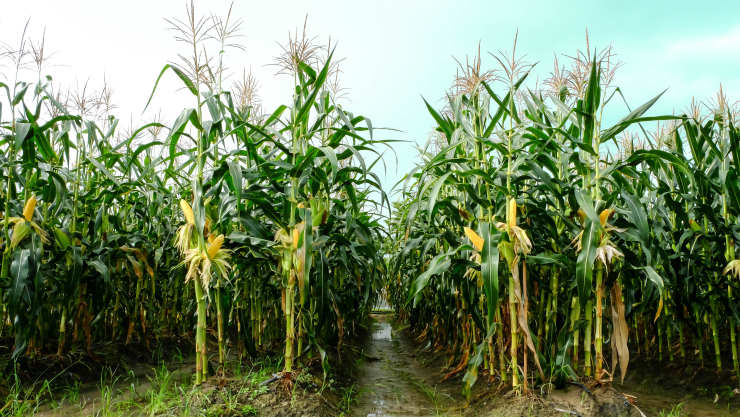
Corn matures faster as the temperature rises. So this is one of the main components of growing this vegetable. Corn ripens typically between fifteen to twenty-three days after silking. However, if temperatures are exceptionally high, it may do so earlier.
The top ear matures one to two days before the lower one when two ears grow on a stalk. When ready for harvest, ears should be rounded or blunt, not pointed, with browning tassels and plump, milky kernels. You should pull back some husk and test by poking a seed with your fingernail. It is ready if it is white or milky.
Also, the essential process you should follow at the beginning is soaking the seeds. Usually, most seeds need to be washed twenty-four hours before the plantation. But for this vegetable, it’s essential. You have a limited time interval between planting, growing, and harvesting your vegetable. It is a fussy vegetable if you do not follow the production time properly. We highly suggest you fasten the seed’s germination process to prevent your efforts from getting wasted.
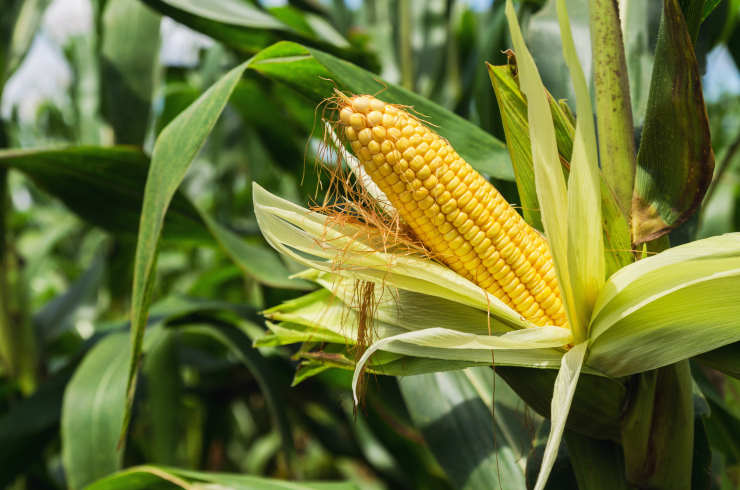
Till the conditions are ideal for them to germinate, almost all seeds are in a state of suspended animation known as dormancy. A seed may enter dormancy even when exposed to water, oxygen, and the proper temperature, postponing germination until it gets extra environmental and chemical cues. A seed may go dormant while it is still attached to the parent plant, or it may go dormant after it has detached.
For example, chilling seeds to mimic cold weather or using abrasives to degrade the seed coat are procedures that people in the agriculture industry frequently use to break dormancy and get seeds to germinate. We suggest you follow a similar process to fasten the germination process and eventually fasten the corn’s overall growth.
How to Germinate a Corn Seed
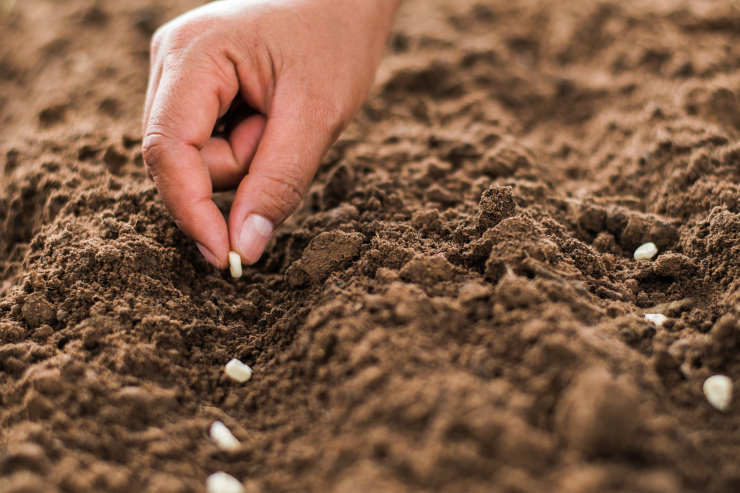
It can be superficial to presume that seeds are relatively passive from the outside because of their appearance. Research indicates that some of the tissues inside seeds are still functional and perform certain fundamental metabolic functions, such as cellular respiration. In other words, seeds merely maintain themselves while waiting for favorable environmental circumstances to allow them to start growing. All seeds require water, oxygen, the proper temperature, a good location, and some time for germination. If you want to learn how to grow corn from seed, you should know about the germination process first and foremost.
Enzymes in the seed are hydrated by water, which activates them. The seed starts to release energy from its food reserve for growth. Causes the cells of the embryo to swell as a result of pressure building inside of them. The seed coat frequently splits open as a result of this.
Seeds also require oxygen to develop energy for germination and growth. The embryo uses the energy from its dietary reserves. Similar to all living things, this is accomplished by a process known as aerobic respiration, which entails a sequence of events in which glucose and oxygen are used to release energy. Aerobic respiration releases energy using glucose and oxygen, generating waste products like carbon dioxide and water.
The final aspect of germination is the temperature. The ideal temperature for seed germination varies based on the plant species and habitat. Some people require temperature changes. Before they germinate at a greater temperature, some require extremely cold circumstances for a few weeks or even months. It ensures that seeds for cold climates, for instance, postpone germination until after winter.
Should I Soak Corn Seeds Before Planting?

The short answer is yes. You should definitely soak the seeds before planting when growing from the seed. It’s an unwritten rule to grow anything in your garden. The seed is a compact starter pack. Its design is highly protected, making it harder to force any seed to grow on its own. By soaking the seed, the plant can break through its hard shell and begin growing. Almost all seeds respond to the presoak approach, despite different seeds requiring various developing conditions.
We may change the requirements for growth to meet our needs, which enables us to achieve stunning results and an entire harvest from any food in any climate. Typically, rain falling on the ground and reacting with seeds left behind by plants the previous year cause seeds to germinate. By giving the seeds the necessary things to survive, modern agriculture allows us to mimic this process and trick the seeds into germination.
Therefore, if you reside in the great white north, you may produce habanero peppers year-round using greenhouses and artificial lighting by providing the plants with the same amount of light, air, soil, and water as if they were growing close to the equator. We also obtain more viable seedlings each season thanks to artificial sowing and germination processes. Usually, when a plant releases seeds, hundreds of seeds are left on the ground.
Those seeds react to the first rains when the plant dies and the winter is through. Only a tiny percentage of those seeds do, however, ever sprout. The remainder either don’t sprout or might grow the following year. You can significantly boost this germination rate by using growing techniques like presoaking seeds, which will result in more plants from fewer seeds.
Final Tips
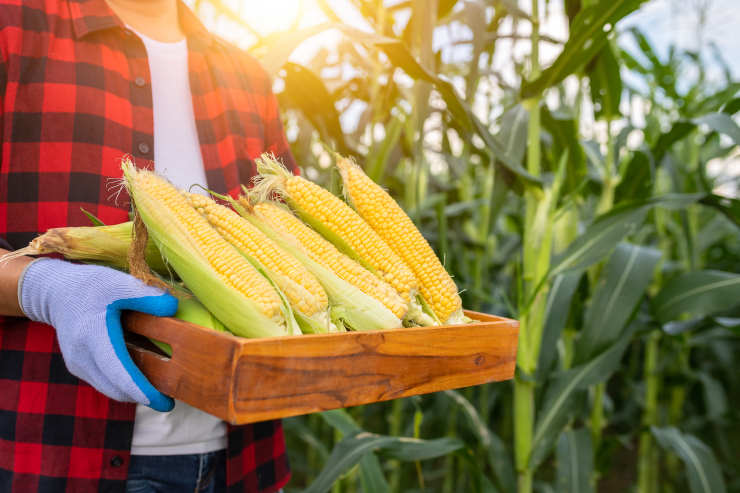
- Corn consumes a lot of nutrients from the soil, such as nitrogen, phosphorus, and potassium. Throughout the growing season, you must regularly feed it with proper fertilizers.
- Pick a region of your garden where high feeder produce such as tomatoes has never been cultivated. If you can’t choose where to plant, pay close attention to how the soil is prepared to ensure it has enough nutrients.
- Corn is not at all drought-resistant. Regular watering is necessary significantly while the ears are growing.
- Your placement should receive direct sunlight for most of the day and, if possible, wind protection. Each block should ideally be no smaller than 3×3 square and feature rows roughly a foot apart because you will be planting in blocks.
- Wind pollinates corn and must be planted in blocks to enhance pollination. You might need to manually aid in pollination if you’re producing a small block of maize.
- When directly sowed in the garden, corn grows the best. Although it is possible to grow them in pots, maize seedlings must be handled cautiously because corn plants don’t enjoy disturbing their roots during transfer. In either event, corn shouldn’t be planted in the garden until all threat of frost has passed and the ground is warm, or at least 50 degrees Fahrenheit for sweet corn. The ideal soil temperature for super-sweet corn is at least 60 degrees.
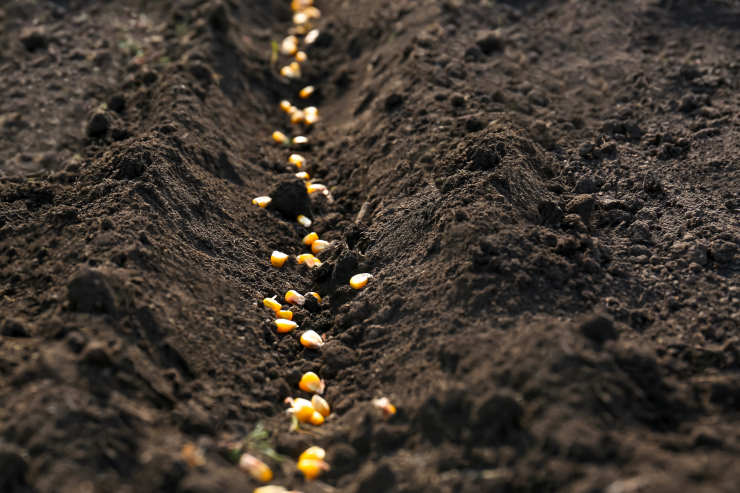
- You can cross-pollinate corn if you don’t know how to grow corn from seed or have not grown this produce, plant only one type of corn in your garden to prevent cross-pollination. Your corn may be harsh and tasteless if there has been cross-pollination.
- You should plant when the season is right and harvest when the season is right. If the soil is too cool and wet, seeds won’t sprout, so if corn doesn’t appear by July 4th due to weather or whim, that’s just the way it is.
- Turn the soil over and add manure two to four weeks before planting. So that the manure has time to break down a little before planting and start watering the soil, if you’d like, add garden soil in bags. When you pile soil with your hands, you want it to feel light and airy, like a souffle, indicating that it has substance.
Conclusion
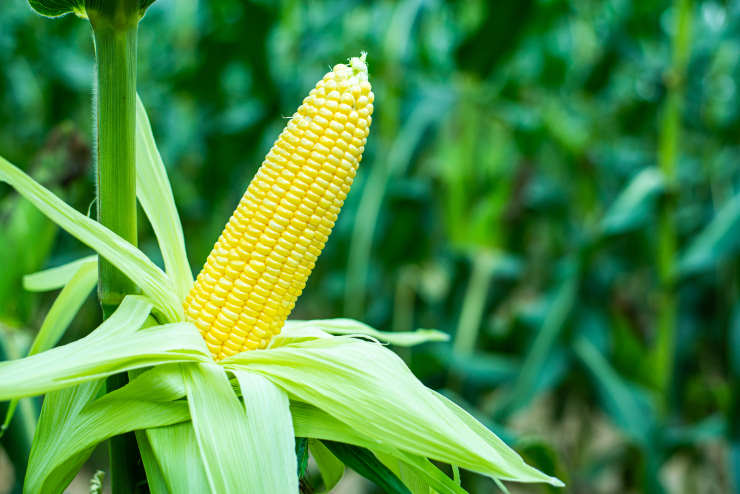
If you plant corn according to the rules, you’ll probably be rewarded with solid stalks that yield one to two ears of corn each. You just need to research how to grow corn from seed thoroughly. In this article, we tried to explain the growing process generally. But please remember that the growing process depends on the corn’s variety. While producing corn, please mind the plant’s location, estimated planting time, and soil preparation.
You can increase the germination rate of your seeds by presoaking them. When using natural sprouting techniques, seeds may need many downpours to soften the outer shell and activate the cotyledons, which cause the seed embryo to begin growing. The regular backyard corn is a little shorter and has smaller ears than store-bought corn, but it has an unrivaled sweetness. After one successful harvest, you’ll find it difficult to go back to buying your corn at the supermarket.
You may also be interested in:
How to Grow a Banana Tree from Seed

